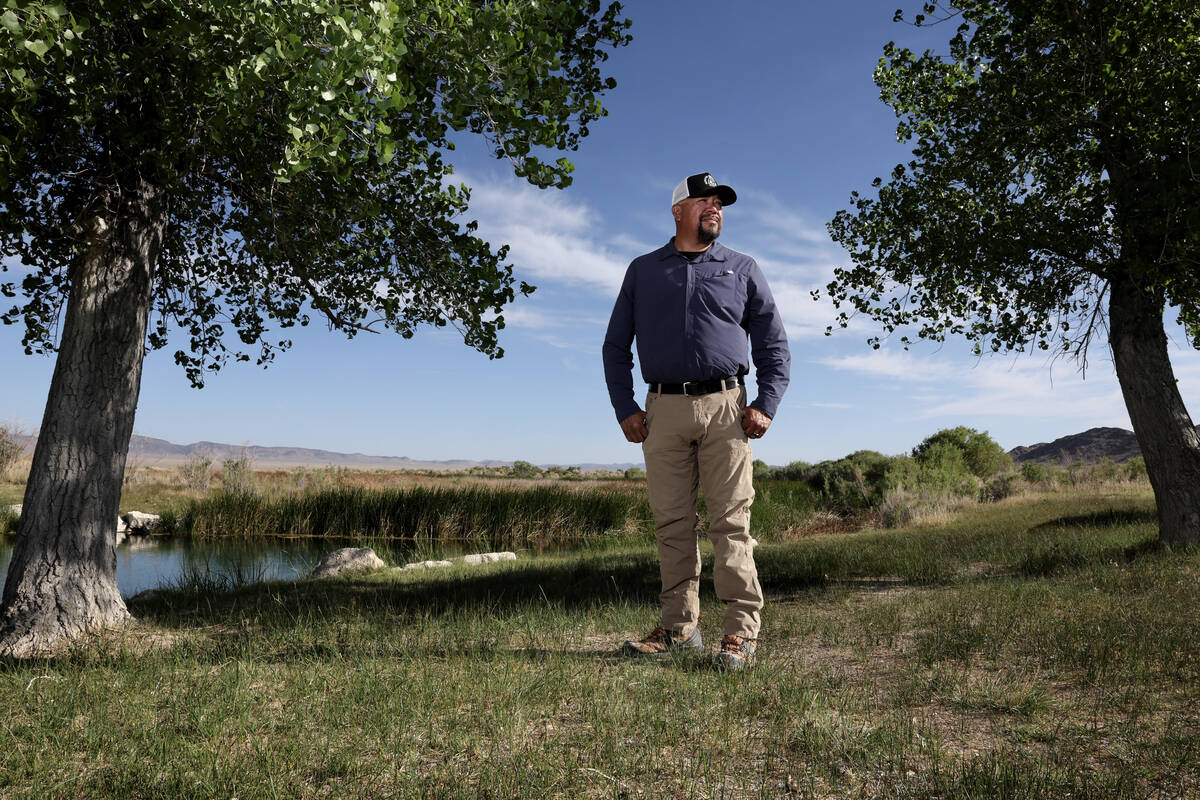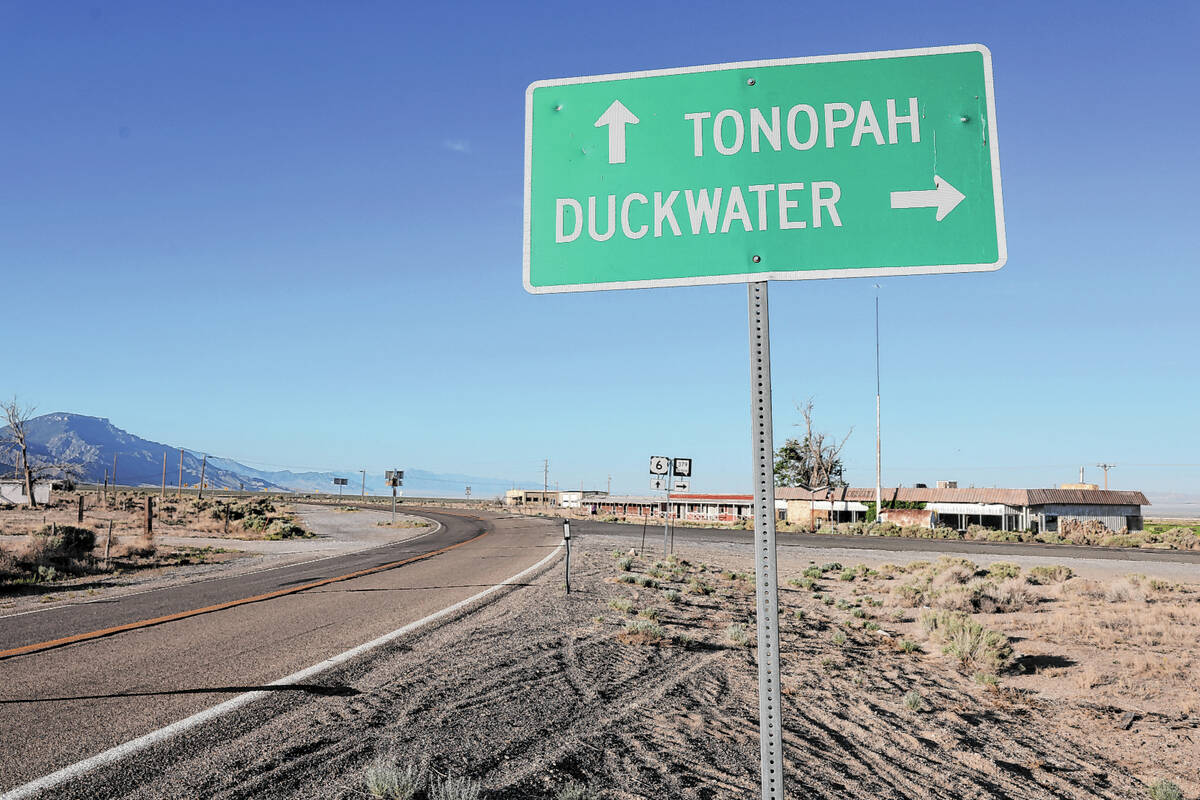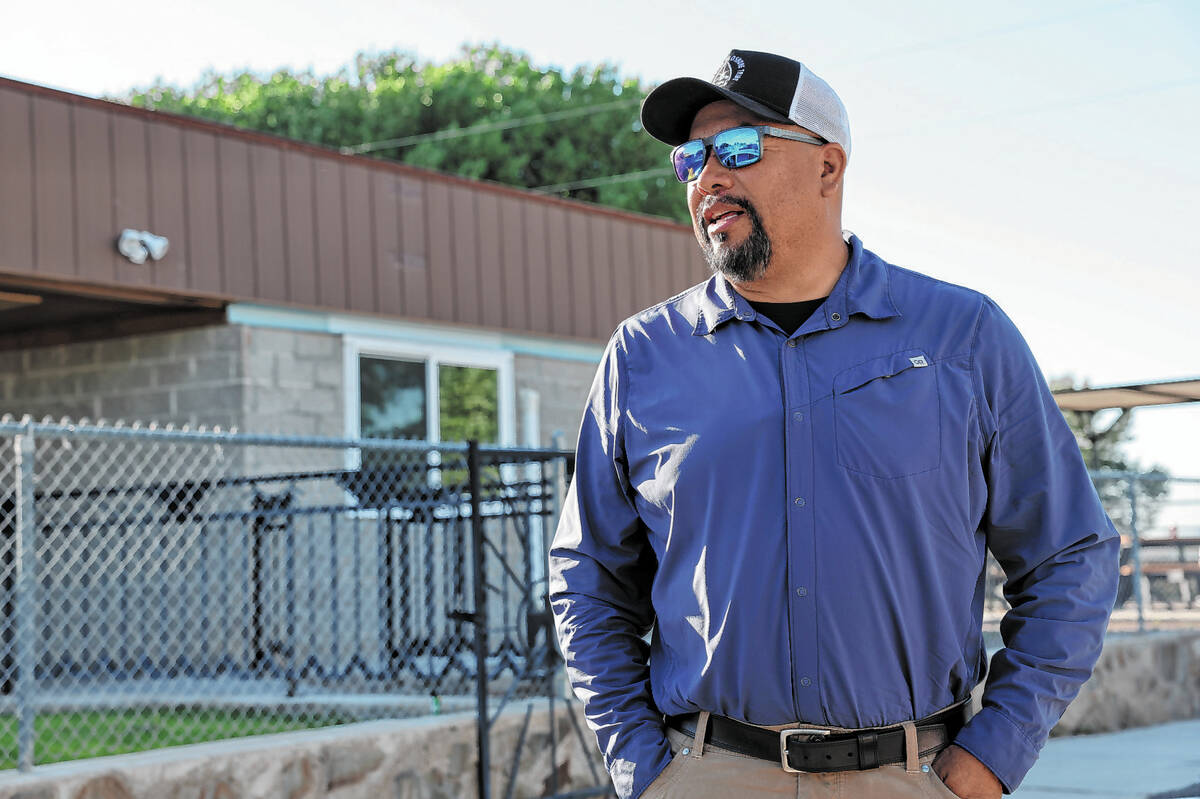‘We need to get them back’: Ancient remains returned to Nevada tribe underscore repatriation efforts
It may have taken the better part of 15 years, but Warren Graham finally had a package ready for pickup last month.
As the tribal historic preservation officer for the Duckwater Shoshone Tribe, part of Graham’s job entails working with museums, universities and government agencies of all levels to repatriate ancestral remains and artifacts.
So when he got the call from the Nye County Sheriff’s Office to pick up unearthed ancient remains that were first discovered in 2010, Graham and the tribe’s medicine man eagerly made the daylong road trip on May 14 from the Duckwater reservation to Pahrump and back so they could return what was left of a boy who almost assuredly belonged to the Shoshone people.
“There is a sense of duty to get back the things that were taken without our permission,” Graham said in a recent interview with the Las Vegas Review-Journal. “I think there’s a cultural connection between us and our ancestors, and we need to get them back. It’s very important.”
According to Graham, it’s the third set of Native American remains he has helped to repatriate since assuming his role in 2017, but the recent episode underscores the ongoing push in Indigenous communities to return ancestral remains, Graham and other tribal authorities say.
It’s a push that’s happening as more discoveries are expected to be made in the coming years.
Stacey Montooth, executive director of the Nevada Department of Native American Affairs, said it’s likely tribal governments in the state will find more remains as urban and commercial projects expand into previously undeveloped swaths.
“In Nevada, it’s been a fairly frequent occasion,” Montooth said of remains being disturbed. “Especially in the last couple of decades, because of the growth, mostly in suburban areas.”
It all comes amid a backdrop of evolving federal regulations.
Last year, the Department of the Interior established a requirement that museums and federal agencies take inventory of any Native American remains or affects in their possession and make an effort to return them to descendants of the corresponding tribal organizations.
Since then, Graham said his office is working to return nearly a dozen other sets of remains.
‘It fell through the cracks’
Graham and Nye County Sheriff Joe McGill said that not much was known about the remains that were returned to the Duckwater Shoshone Tribe last month, which is partly why it took so long for them to be returned.
Graham was told they were unearthed by a geologist who was running a summer field school in July 2010. Nye County Sheriff’s deputies were called to investigate, and by November of that year the remains were sent to forensic anthropologists at the University of North Texas for identification, McGill said.
The analysis concluded the remains likely belonged to a Native American boy age 9 to 13, but not much else, McGill said. Researchers were able to determine the remains came from an ancient burial site, but no definitive identification could be made.
Without proper identification and much else to work off of, the remains sat in an evidence vault.
“And for several years, there was nothing,” McGill said. “It fell through the cracks.”
McGill said at some point in the last year, an evidence technician started to re-examine the case. In accordance with the new Interior Department rule, the Nye County Sheriff’s Office contacted the Bureau of Land Management, which coordinated with Graham and facilitated the return on May 14.
What they got back was a box containing a few skeletal fragments, each wrapped in paper, Graham said.
Rather than returning the remains to where they were discovered, Graham said he and the tribe’s medicine man took the boy’s remains to an undisclosed location and performed a burial ceremony that involved prayer, song and “smudging” — the practice of burning plants to purify a spirit.
“Whenever I do the repatriations, I rely on my elders and my spiritual leaders because they’re the ones that are going to be performing the reburial and the reburial ceremony,” Graham said. “I’ll tell them the situation, and then we’ll come up with a game plan and then we’ll go out.”
After all this time, neither Graham nor McGill know the identity of the boy or when he may have died. Attempts to reach anthropologists at the University of North Texas were unsuccessful.
“There’s no way to identify the person and no saying when it was placed there, or any of that,” McGill said. “Unfortunately, this is going to die a mystery.”
Other efforts
One of the most pressing issues facing tribes in Nevada is what to do with remains at the cemetery of the former Stewart Indian School, a 110-acre site four miles south of the state capitol where the DNAA is headquartered today.
The Stewart Indian School was a boarding school that operated from 1890 to 1980, and was a hub where native children from across the state would be sent to, sometimes as young as four, Montooth said. Other indigenous boarding schools existed in Nevada, but children from more than 200 tribes in Nevada, California, Arizona, and New Mexico were taken from their homes and relocated there.
“It was a boot camp,” Montooth said. “It was forced assimilation to destroy the culture, but it was also about getting the land. The idea was to break up the tribal structure.”
But even that has proven to be difficult because there is no one-size-fits-all custom and some native cultures forbid disturbing remains. Others may not want to navigate the often lengthy procedural steps it takes to retrieve remains when dealing with federal or state officials, Montooth said.
Many tribal governments are considered sovereign nations and deal primarily with the federal government, Montooth said. The Department of Native American Affairs was not involved with the remains that were returned to the Duckwater Shoshone Tribe last month.
Repatriation has long been an important practice to many native communities, according to Montooth, who said she was delighted to hear the remains in Nye County were returned to its proper custodian.
“That’s one of the beauties of sovereignty,” Montooth said. “This creator-given right to determine how we live and how we govern ourselves.”
Contact Casey Harrison at charrison@reviewjournal.com. Follow @Casey_Harrison1 on X. or @casey-harrison.bsky.social on Bluesky.




















